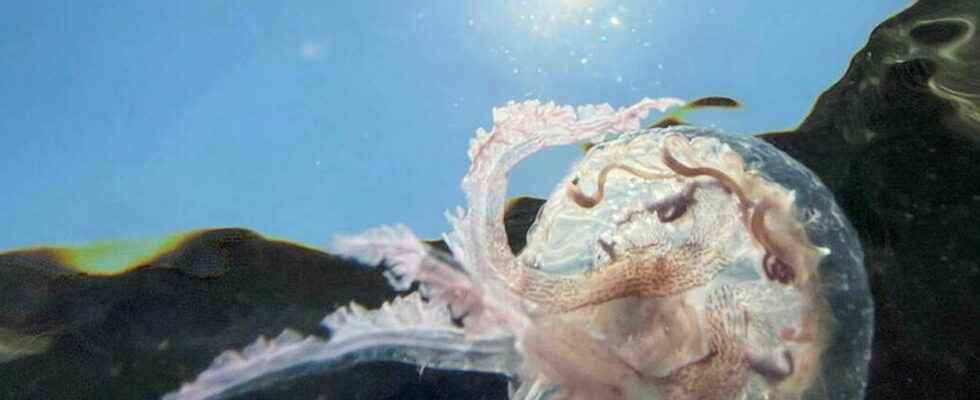Lhe summer holidays are in full swing. For many French people, they are synonymous with the beach. If you plan to swim, you might come face to face with jellyfish. They are making a comeback on the beaches of the French coast. These cnidarians are very present in the water, mainly in the Mediterranean.
The Provence-Alpes-Côte d’Azur region, from Menton to Marseille via Nice, Cannes, Saint-Tropez or Antibes, is the most affected. In Occitania too, from Argelès-sur-Mer to La Grande-Motte, it is difficult to escape. Le Figaro published the top 30 of the most affected municipalities during the month of July, based on data provided by the Méduséo application, the jellyfish weather report.
Two Bouches-du-Rhône towns in the top 5
The proliferation of jellyfish can be explained in particular by the reduction in the number of predators in recent years. When in contact with the skin, they can immediately cause an inflammatory reaction which is characterized by an intense burning sensation, tingling, pain and itching. But even though they are very painful, jellyfish stings are mostly harmless.
READ ALSOOur best friend the jellyfish
Here is the top 5 coastal towns where you encounter the most jellyfish in France: Carry-le-Rouet (Bouches-du-Rhône) comes in first position followed by Saint-Jean-Cap-Ferrat (Alpes-Maritimes) , Hyères (Var), Ramatuelle (Var) and La Ciotat (Bouches-du-Rhône). From a global point of view, Corsica, Var, Alpes-Maritimes and Bouches-du-Rhône are the most affected areas. A classification which is explained by a precise meteorological phenomenon. These include the winds that carry these species to the coasts, but also the increase in water temperature as summer approaches. Conversely, currents can also push them offshore.
The Atlantic coast is rather spared by jellyfish even if that does not mean that they are absent. The tides play a major role in their presence and allow these undesirable marine animals to be sent back to sea. They are also less reported, because the species are less stinging and the number of swimmers is lower than in the south of France.
